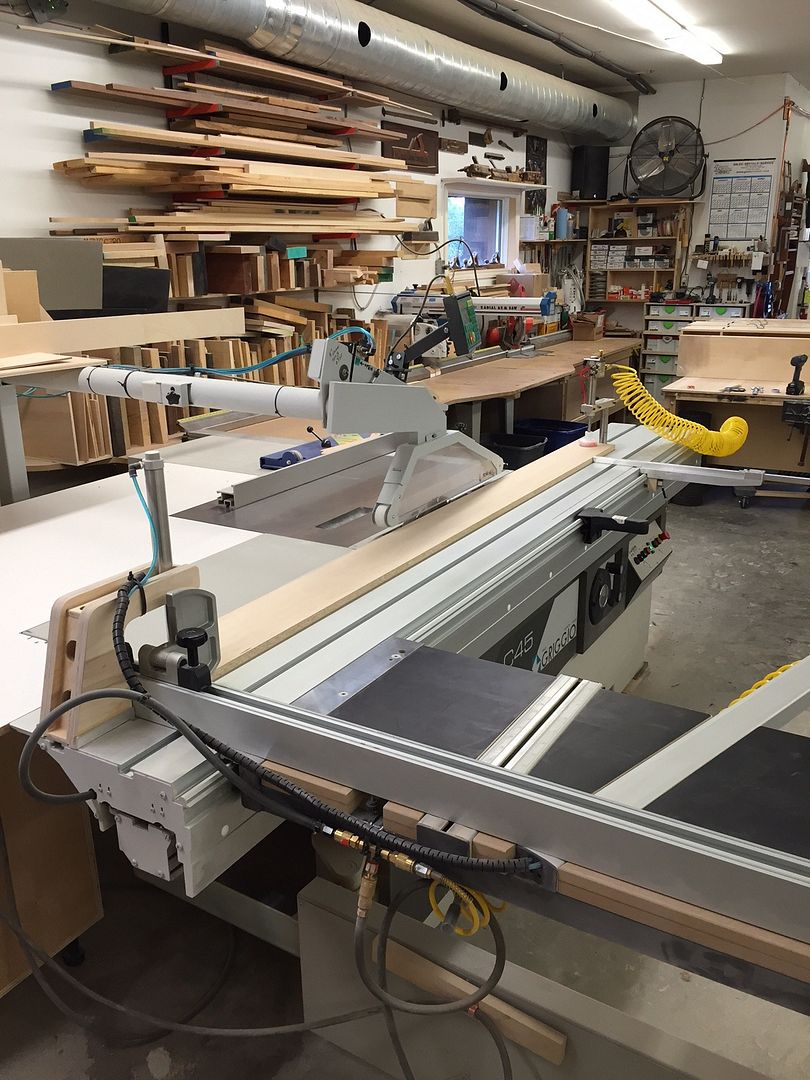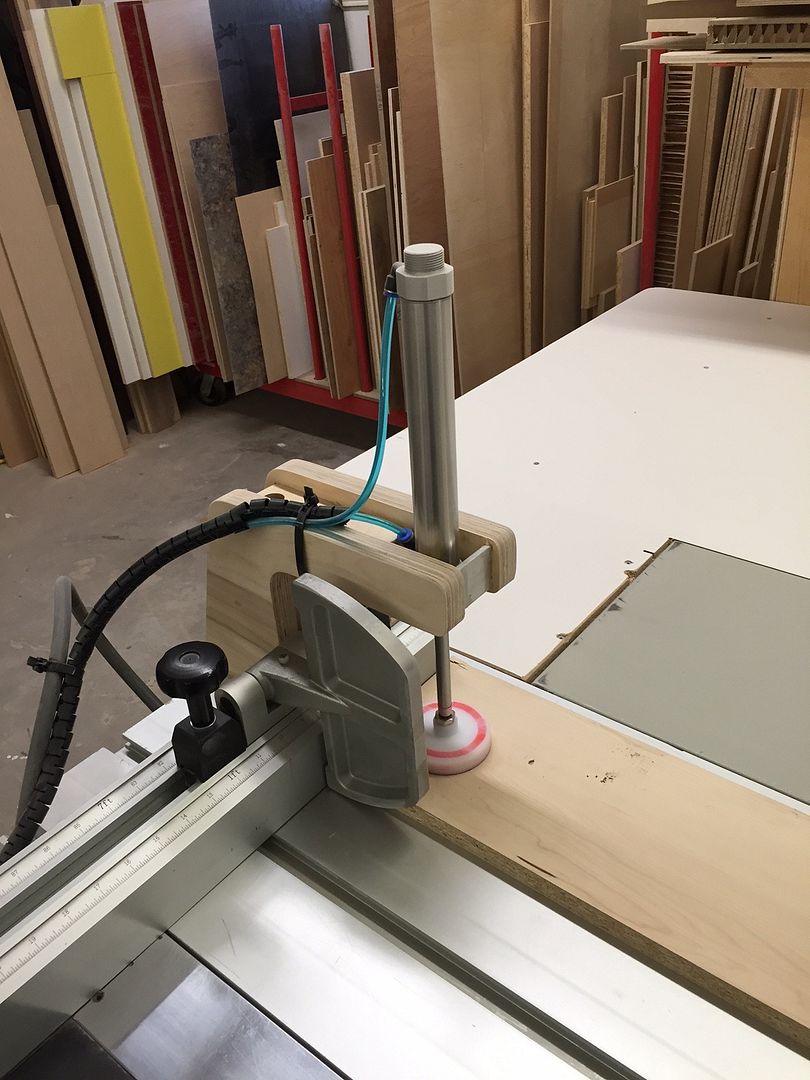So I was investigating getting a parallel fence for my slider - an add on, that is used along with the stop on the cross cut fence to better align and cut strips of sheet stock (vs using the fence which is canted slightly away from the blade and can introduce an error).
Commerically made, I was quoted nearly $800 US dollars each.. which would amount to nearly $2400 Canadian for a pair. (using two allows easy cutting of tapers).
I was mulling things over in my mind over the past several weeks. Since I do some rudimentary metal work with my lathe and mill in the shop tool room, the only thing I was apprehensive about was making the part that hung off and locked to the edge of my Griggio sliding carriage. Its a funky shape unlike most of the standard slots and bars etc.
Then I got the idea to try and cut the complex shape from layers of Baltic birch on the Shopbot. I used 6mm material, and a 1/8" bit. Gluing several layers together, I thought this would probably work!
After the wooden block was assembled, I epoxied an aluminum U channel to it. I fabricated a cam clamp from aluminum and brass to lock it to the carriage. A slot milled into a block of aluminum, and a 3/4" square bar of aluminum complete the fence.
The locking bolt is a 1/4x20 brass threaded rod with a handle and wont marr the aluminum sliding section. A peel and stick tape and a cursor I borrowed from one of my Kreg fence stops allows very accurate setting.
Can be taken on and off the saw in seconds. Locks well, and is very accurate.
Total cost was about $30 and 3 1/2 hours of my time. Now I need to make another.





 Reply With Quote
Reply With Quote







